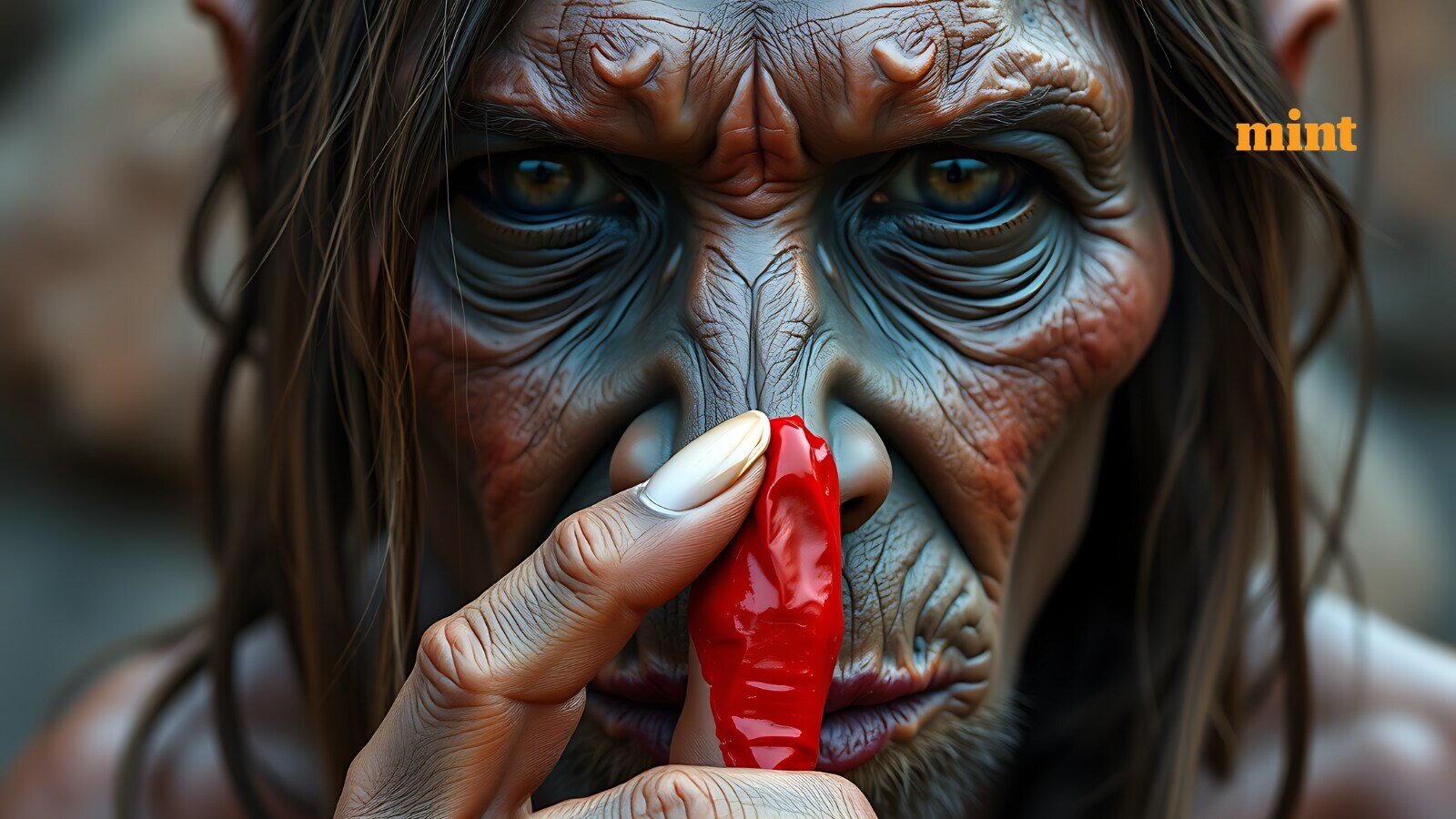
Genetically modified ‘dire wolf’ pups Romulus and Remus.
| Photo Credit: REUTERS
Have dire wolves been de-extincted?
The total DNA content of an organism, called its genome, is important to understand its identity. The genome of a gray wolf consists of 2.447 billion base pairs. This means there are 2.447 billion positions in the DNA filled by one of the four nucleotides: adenine, thymine, cytosine, and guanine. The order in which these four nucleotides appear determines the genetic identity of an organism. In a preprint paper uploaded on April 11, Colossal Biosciences claimed that the genomes of the gray wolf (Canis lupus) and the dire wolf (Aenocyon dirus) are 99.94% identical, meaning 2.445 billion of the 2.447 billion base pairs were in the same places in the two genomes.
Editorial | Dire efforts: On de-extinction and conservation
This small difference is enormous in genetic terms. Humans and chimpanzees share about 98.77% of their DNA, yet no one would mistake one for the other. In the case of wolves, the 0.06% difference still corresponded to 1.47 million base pairs differing between the two species.
These differences are what make the two animals distinct. To create these ‘dire wolf’ pups, Colossal scientists edited the genome of a gray wolf and implanted embryos with the modified genome into surrogate dog mothers. While Colossal hasn’t revealed the exact nature of the changes its scientists made, it says on its website that it made “precise genetic edits at 20 loci across 14 genes” on the genome of a gray wolf to “recreate” the dire wolf. In other words, even if there were a few hundred individual edits across those 20 loci (or positions on the genome), the new animals probably contain 0.02% of the changes that would make them a true dire wolf. And this is an optimistic estimate. Put another way, the new wolf pups are far from being dire wolves.
What changes did scientists make?
The 20 locations where Colossal scientists edited the gray wolf genome all appear to be places that would result in cosmetic changes. For example, one of these regions is on a gene called LCORL, which is responsible for the dire wolves’ larger size. Other edits include genes involved in fur colour and density. Thus, Colossal Biosciences can be said to have made gray wolves that look like dire wolves.
While the nature and magnitude of the genetic differences already undermine Colossal’s claims, a 2021 study published in Nature raised a more fundamental issue. The study suggested that despite genetic similarities, dire wolves may not be true wolves at all, but rather a distinct canid lineage that diverged long before modern wolves evolved. This study prompted scientists to reclassify dire wolves, and their species name changed from Canis dirus to Aenocyon dirus. This means dire wolves’ behaviour, social structure, and ecological roles are likely different from that of modern wolves.
Why is de-extinction controversial?
Colossal has said on its website that its mission is to “secure the health and biodiversity of our planet’s future.” To achieve this, the company aims to revive several extinct species — including the woolly mammoth, the thylacine, and the dodo — and reintroduce them in the wild. Bringing back animals that lived thousands of years ago, like the dire wolf or woolly mammoth, carries significant ecological risks. The environmental conditions, plant communities, prey species, and climate that once supported these animals no longer exist. Modern landscapes are fragmented, and heavily altered by human influence.
Reintroducing extinct species to such drastically changed habitats could do more harm than good, potentially disrupting current ecosystems rather than restoring ancient ones.
How is conservation changing?
Misguided claims like these can often have a detrimental effect on lawmakers’ priorities. For instance, The Washington Post reported Colossal’s dire wolf announcement buttressed the Trump administration’s plan to weaken federal protections for endangered species.
It quoted Interior Secretary Doug Burgum as saying innovation rather than government regulations will protect species.
Scientists have estimated that 99.9% of all species that ever lived on the earth are now extinct. Dire wolves themselves most likely died out at the end of the last ice age when the numbers of large herbivores, their main prey, started dwindling. The idea of reviving extinct animals is certainly captivating but it seems more prudent to apply this technology to protect and strengthen existing ecosystems rather than reviving extinct ones.
The birth of the genetically modified gray wolf pups may mark the beginning of a new era in conservation, but doubt lingers on what kind of an era it will be. The sound of the first dire wolf howl in 10,000 years appears to be less of a triumphant echo from the past and more of a warning to the present, urging us to rethink the path we are on.
Arun Panchapakesan is an assistant professor at the Y.R. Gaitonde Centre for AIDS Research and Education, Chennai.
Published – April 18, 2025 08:30 am IST




